Description
Genus: Suillus
Species: hiemalis
- Species 2: cothurnatus var. hiemalis
- Species 3: cothurnatus ssp. hiemalis
Common Name:
Tells: Viscid orange cap with sour skin fades to brown or tan. Orange cap flesh ages to white & usually tastes bad. Yellow-orange stem ages to white, a grayish ring, many red-orange spots that age dark, & often has a distinctive whitish/pink “root.”
Other Information: Nothing bruises. Yellow pores age to orange/brown. Cap flattens w/age. Stem retains a yellow area by the pores even when older. Stem flesh has a bright orange spot by the root. Imagine a much stouter, worse-tasting version of S. salmonicolor w/no cottony roll at the base. Likes sandy soil w/a mix of oak and pine. Only found in the deep south, but fairly common. The name heimalis means “growing in winter,” a reference to when these are found.
Science Information: DNA research in a 2021 dissertation shows that S. cothurnatus is a European species, and the thing called “cothurnatus,” “cothurnatus ssp. hiemalis,” and/or “cothurnatus var. hiemalis” is a single, genetically distinct species native to the southeastern United States. It will all become official once the way gets paved for the follow-up paper, so we may as well get ahead of the game. If you object, call this mushroom by the traditional name S. cothurnatus instead, which has been merged into S. salmonicolor subject to this new species. Just know that you’re actually wrong even if the rules of nomenclature are on your side.
Edibility: Edible, but it’s hard to call this one “good.”
CHEMICAL TESTS:
- NH4OH (Ammonia): No data.
- KOH: No data.
- FeSO4 (Iron Salts): No data.
Links:
 |
0 |  |
0 |  |
0 |  |
398 |

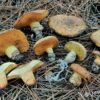
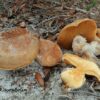
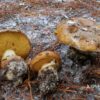
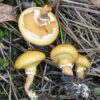
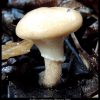
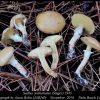
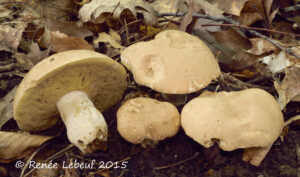
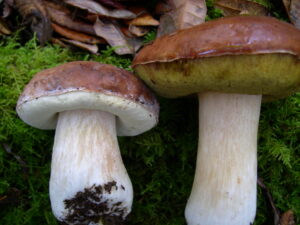
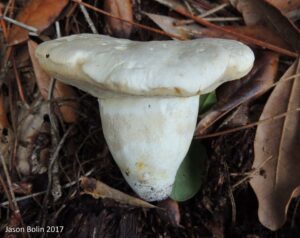

Got something to discuss?